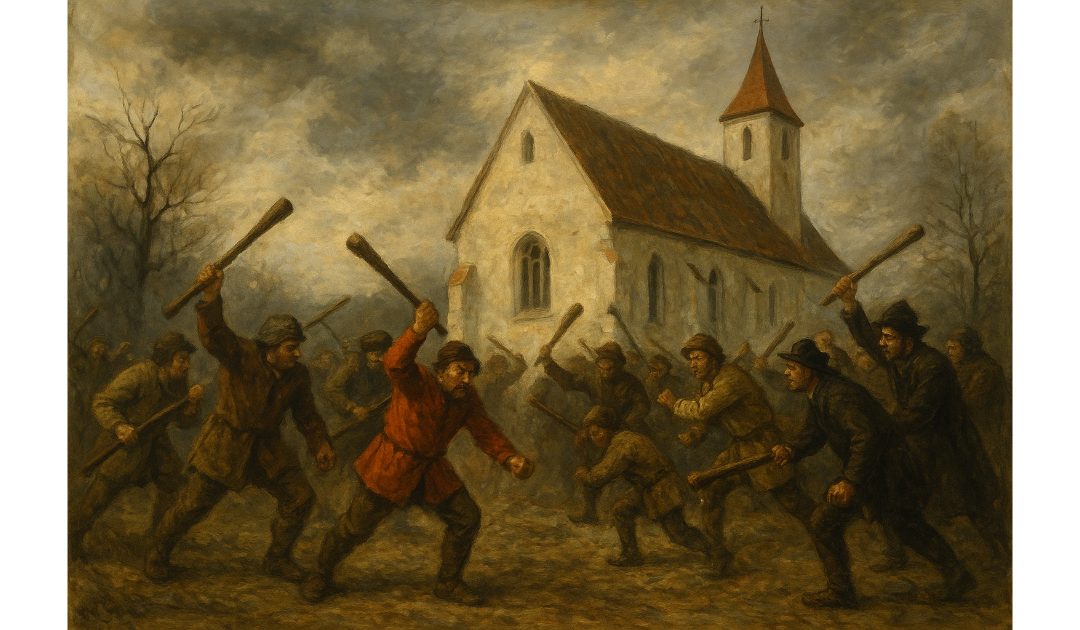Officially, the Cudgel War began in Ostrobothnia with an attack by peasants on Isokyrö‘s church on the 25th of November 1596. The Cudgel War, also known as the Club War, was a peasant uprising that occurred in Finland between 1596 and 1597, during the period when Finland was part of the Swedish Kingdom. It was one of the most significant popular revolts in Finnish history, driven by social, political, and economic grievances that had been building for decades. The conflict derived its name from the main weapons used by the insurgent peasants: simple clubs and cudgels, reflecting the imbalance of resources between the rural population and the professional soldiers sent to suppress them.
In the late sixteenth century, Sweden was embroiled in a series of political and military struggles. King Sigismund, who was also King of Poland and a staunch Catholic, faced opposition from Duke Charles (later King Charles IX), a Protestant leader. This wider political quarrel spilled into Finland, which at the time was a sparsely populated and largely agrarian region of the Swedish realm. The Finnish peasants were burdened with heavy taxation and mandatory military service, which were exacerbated by the ongoing wars against Russia as part of the protracted conflict known as the Russo-Swedish War (1590–1595).
Economic hardship formed the backdrop to the uprising. The harvests of the mid-1590s were poor, and the burden of maintaining soldiers, providing supplies, and paying taxes pushed many peasants to desperation. The enforcement of the so-called ‘castle law’, which compelled peasants to support local garrisons, became a particularly sore point. Furthermore, the soldiers and mercenaries stationed in Finland often mistreated the local population, seizing food and property, which further inflamed resentment.
The immediate trigger for the Cudgel War was the mobilisation of peasants for another military campaign in 1596. Many rural inhabitants simply refused to take up arms in a conflict they felt served the interests of the nobility rather than their own. Instead, they gathered together under local leaders—most notably Jaakko Ilkka, a peasant from Ilmajoki—who became a symbol of resistance. The rebels initially achieved some success, forming large bands of fighters armed with clubs, axes, and improvised weapons, and they attacked the forces loyal to the Swedish crown, including local nobles and soldiers.
The rebellion, however, faced formidable challenges. The peasants were poorly armed and lacked the organisation, training, and resources of the professional forces commanded by experienced officers such as Governor Klaus Fleming, a staunch supporter of King Sigismund. Fleming moved swiftly to crush the revolt, using both cavalry and infantry to devastating effect. The peasant bands were defeated in several engagements, including at battles near Nokia and Santavuori, where many rebels were killed or captured. Jaakko Ilkka himself was captured, escaped briefly, but was eventually recaptured and executed, becoming a martyr figure in Finnish folk memory.
The repression of the Cudgel War was extremely harsh. Thousands of peasants are believed to have been killed, either in combat or through subsequent executions and reprisals. Entire communities suffered, as the authorities sought to ensure that a similar uprising could not occur again. The brutal suppression left a deep scar on the Finnish population, reinforcing the social divisions between the rural poor and the Swedish-speaking aristocracy who dominated the governance of Finland at the time.
In the broader context, the Cudgel War illustrates the precarious position of peasants in early modern Northern Europe, caught between the demands of state-building, foreign wars, and local feudal pressures. It also reflects the intersection of larger political struggles—in this case, the dynastic conflict between Sigismund and Duke Charles—with local grievances. Although the uprising was ultimately a failure, it has persisted in Finnish historical memory as an emblem of popular resistance against oppression.
The legacy of the Cudgel War is complex. On one hand, it did not achieve any immediate social or political reforms for the Finnish peasantry, who continued to bear heavy burdens for decades to come. On the other hand, the event has been romanticised in folklore and literature, where Jaakko Ilkka is often depicted as a heroic figure who stood up for the dignity and rights of ordinary people. In the long term, the uprising contributed to the growing awareness among the Swedish authorities of the risks of pushing rural populations beyond their limits, particularly in a frontier region like Finland that was vital for the kingdom’s defence.

